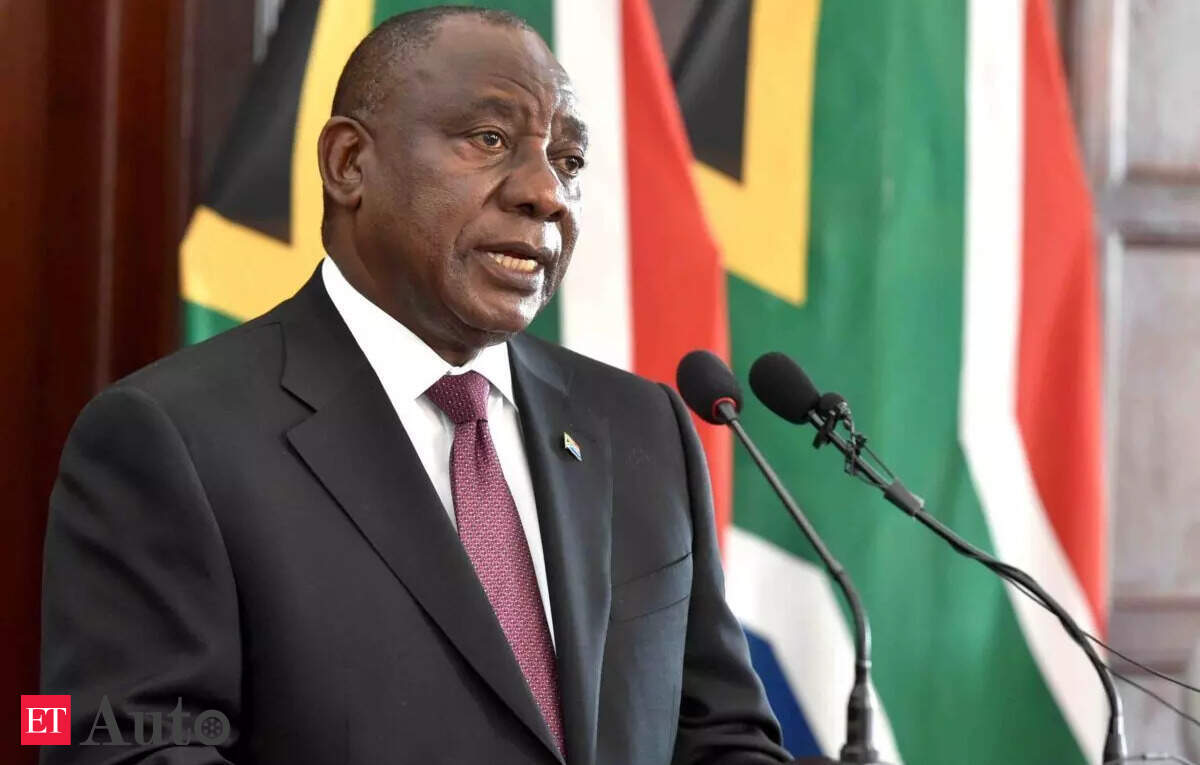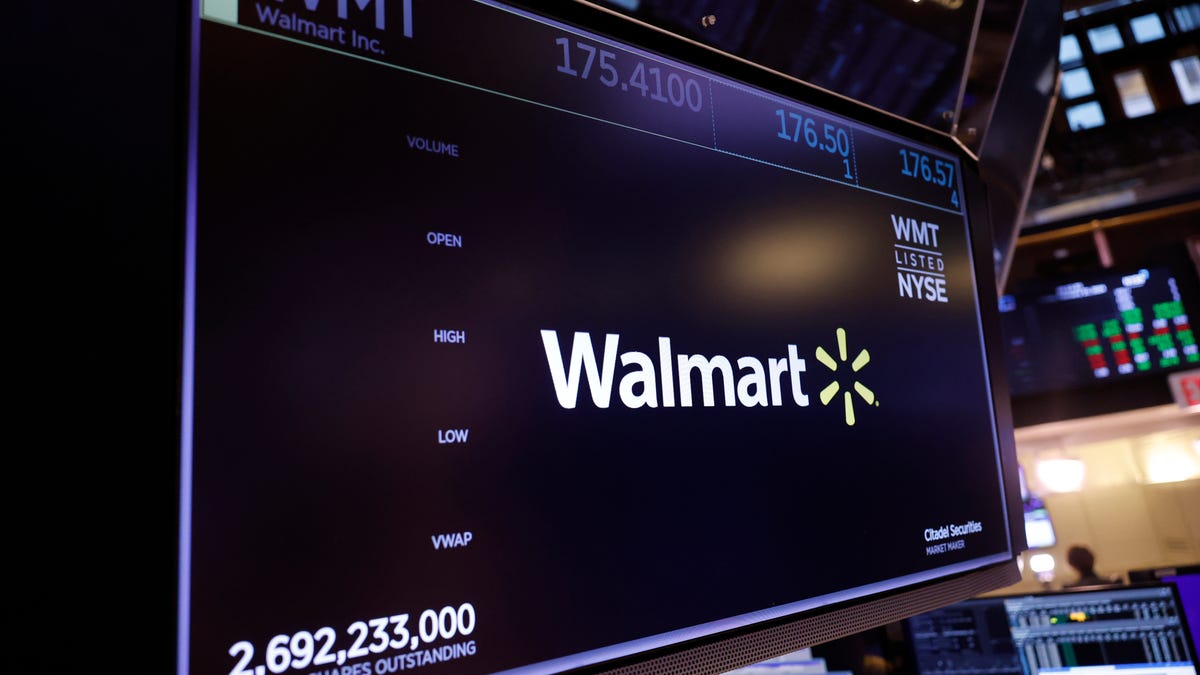'Sell America' is back on after a massive debt warning

CNN —
Wall Street is on edge about American investments again after receiving a significant warning about the safest of all safe havens: US debt.
Moody’s downgraded America’s debt on Friday evening from its previously perfect AAA credit rating, the last of the three major credit rating agencies to strip US Treasuries of their flawless reputation. Explaining its rationale for lowering its credit rating on the United States for the first time since 1917, Moody’s cited ballooning US debt levels and Washington’s intransigence over budget deficit solutions.
US stock futures fell sharply. Dow futures fell 350 points, or 0.8%. The broader S&P 500 futures were down 1.2%, and Nasdaq futures were 1.6% lower.
Investors sold off US Treasuries. The benchmark 10-year yield, which trades in opposite direction to its price, rose to 4.5%, and the 30-year yield crossed 5%. The US dollar tumbled 0.9% against a basket of currencies. Meanwhile, gold, a traditional safe-haven, rose 1.4% to $3,232 a troy ounce.
Investors in American assets have been on a roller coaster ride this year. Initial excitement over President Donald Trump’s business-friendly and tax-cut policies sent stocks surging to a record high in mid-February. But that fervor soon gave way to extreme fear over Trump’s trade policy, sending investors pouring out of American assets in what market observers called the “sell America” trade. That sent bonds and the dollar tumbling and stocks an inch away from a bear market in April.
In mid-April, however, a pause in trade tensions renewed faith in American investments and sent stocks and bonds surging again. But then came Friday’s debt downgrade.
Treasury Secretary Scott Bessent attempted to reassure market participants that the credit rating downgrade was built on outdated information, echoing the refrain from former Treasury Secretary Janet Yellen, who said something similar when Fitch Ratings downgrade America’s debt rating in 2023.
Bessent on Sunday told CNN that he “does not put much credence in the Moody’s” downgrade. When pressed by CNN’s Jake Tapper about whether Trump’s “one, big, beautiful bill” tax cut proposal would further exacerbate America’s debt crisis by reducing revenue, Bessent said the bill would grow America’s economy to lower its surging debt-to-gross-domestic-product ratio.
America’s debt-to-GDP ratio was 92% in the second quarter of 2011 when S&P became the first credit-rating agency to downgrade US debt. It is now 123%, according to the US Treasury.
But market analysts say Moody’s downgrade could send shockwaves through Wall Street again.
“Budget-busting revenue estimates for the big, beautiful bill down in Washington appear to be the problem,” said Chris Rupkey, chief economist at FwdBonds. “When S&P first tried this US downgrade also late on a Friday, on August 5, 2011, it was quite a shock.”
Rupkey noted stocks fell nearly 7% the Monday after America’s first downgrade, but the reaction was far more muted when Fitch downgraded the debt 12 years later.
Debt hawks said Moody’s downgrade should serve as a warning about America’s unsustainable debt load.
“For those looking for a signpost to tell us when to stop adding to our national debt, they should look no further than Moody‘s downgrade,” said Michael Peterson, CEO of the Peter Peterson Foundation, which advocates for America’s fiscal stability. “It’s unacceptable for a great country like America to harm its own credit rating.”
If Wall Street returns to “sell America,” it may not be pretty.
In the late winter and early spring, investors took money out of US stocks and even traditional safe havens like government bonds, pouring them into gold and foreign stocks. Treasury yields, which trade in the opposite direction to prices, surged. And spot gold prices rose above $3,000 a troy ounce for the first time in history in March.
Traders grew increasingly concerned that Trump’s policies could inflict serious damage on the economy. Despite Trump’s insistence that stocks were falling because of the inflationary problems inherited from former President Joe Biden, the market had boomed after Trump’s November election in hopes that his promised tax cuts and deregulation would fuel another economic boom.
But Trump in the months before he took office began threatening massive tariffs on America’s biggest trading partners. The Dow, which was near its record high when Trump started posting messages on Truth Social about tariffs on November 25, hit one more record high a week later and then tumbled. The S&P 500 fell nearly 20% between its mid-February all-time-high and Trump’s April 9 pause of his April 2 “Liberation Day” tariffs.
Now, investors have at least one more thing to worry about: America’s out-of-control debt.
But they may have to fret about the trade war once again. Bessent on Sunday told CNN that if dozens of countries that had been hit with Trump’s “reciprocal” tariffs fail to reach a trade deal with the administration, they’ll face tariffs as high as 50%, the same tariffs Trump unveiled at his “Liberation Day” announcement.
“President Trump has put them on notice that if you do not negotiate in good faith, you will ratchet back up to your April 2 level,” Bessent said.










:strip_icc()/i.s3.glbimg.com/v1/AUTH_63b422c2caee4269b8b34177e8876b93/internal_photos/bs/2025/q/m/8f9LpUS3CaLFbcA6cQ0A/109856146-pa-20-20bras-c3-adlia-20df-2029-01-2025-20ministro-20da-20fazenda-20fernando-20haddad-20fala-20com-20a-20imprensa-20ap-c3-b3s-20r.jpg)
:max_bytes(150000):strip_icc()/GettyImages-2209422147-5da65cad90374aa0abfa699b5468fccc.jpg)

